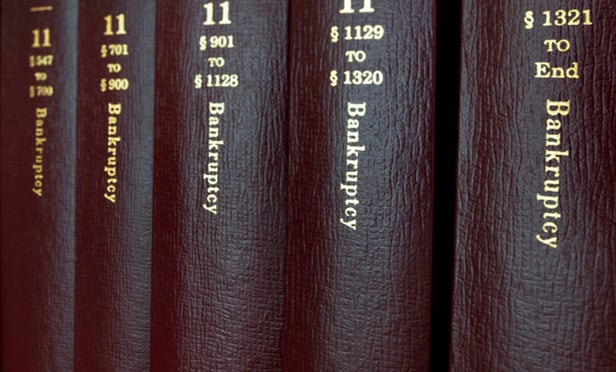Features

Patent Policing: Federal Circuit Upholds District Courts’ Inherent Authority to Sanction Party Conduct
In recent decisions, the Federal Circuit affirmed the inherent powers of district courts to investigate and address potential party misconduct in patent litigations, including suspected fraud and bad faith conduct. This article delves into these key cases that upheld district courts’ policing by standing orders or sanctions and underscore the importance of transparency and proper conduct in patent litigation.
Features

Reading the Tea Leaves: Jury Awards $2+ Million for Bigelow’s “Manufactured in the USA 100%” Label
On April 8, 2025, a California jury found that R.C. Bigelow, Inc., the well-known manufacturer of Bigelow teas, intentionally or recklessly misled consumers by claiming that some of its teabags were “Manufactured in the USA.” The price for this mislabeling was steep, with the jury awarding the class action plaintiffs $2.36 million.
Features

Navigating The Matrix: Mapping Your Firm's Capabilities in a Complex Legal Landscape
The concept of "The Matrix" has existed for decades in professional services firms, though it represents a relatively new framework within the legal industry. This powerful approach to understanding organizational capabilities and client relationships offers law firms a strategic advantage in today's competitive marketplace.
Features

The 56% Problem: Manual Document Tasks Are Holding Lawyers Back — AI May Be the Solution
A new generation of legal tech, including rapidly advancing AI and AI assistants, is introducing capabilities that don’t just automate individual steps. These tools act as proactive collaborators, intelligently navigating complex documents, surfacing key risks, applying context, and taking action. They’re helping legal teams move from manual to marvelous — and that transformation is happening faster than many realize.
Features

DJK Enterprises: Prepetition Waiver of Automatic Stay In Previously Negotiated Forbearance Is Unenforceable
A recent bankruptcy court decision has added its perspective to an increasingly divergent line of case law scrutinizing the enforceability of a debtor’s prepetition waiver of the automatic stay afforded to it by Section 362(a) of the Bankruptcy Code.
Features

DraftKings Loses Bid for Interlocutory Appeal in Lawsuit Over Use of MLB Players’ NILs
A federal judge in Pennsylvania rejected popular sports-betting platform DraftKings’ attempts to certify questions to the appellate court in a name, image and likeness (NIL) dispute with MLB Players Inc.
Features

Supreme Court: Statements Made to FDIC Need to Be “False,” Not Just “Misleading”
This article describes the prosecution in Thompson, then turns to the Supreme Court’s rejection of the government’s contention that 18 U.S.C. §1014 criminalizes misleading as well as false statements.
Features

Commercial Real Estate Insurance Taking More Comprehensive Approach to Risk Evaluation
The commercial property insurance industry is undergoing a dramatic shift. Gone are the days when property owners and operators could simply provide a building appraisal or portfolio valuation to an insurance broker, who would then reach out to a handful of insurance companies to obtain quotes.
Columns & Departments

Landlord & Tenant Law
Defense Due To DHCR’s Refusal to Correct Registration Mistake; Tenant’s Breach of Contract Claim Survives Motion to Dismiss; Acceptance of Surrender Does Not Relieve Tenant of Liability for Damages
Features

Swearing Behind: Overcoming Asserted Prior Art in PTAB Proceedings, Part 2
This two-part article discusses the various legal and evidentiary requirements for antedating and removing prior art that patent owners should consider when their pre-AIA patents are challenged based on a prior art publication or activity that is not otherwise subject to a statutory bar. Part One led off with a discussion of the legal requirements for antedating prior art by establishing an earlier invention via: 1) conception and diligent reduction to practice; and 2) actual reduction to practice. Part Two discusses the legal requirements for removing prior art that discloses an inventor’s own work and the evidentiary requirements for swearing behind prior art.
Need Help?
- Prefer an IP authenticated environment? Request a transition or call 800-756-8993.
- Need other assistance? email Customer Service or call 1-877-256-2472.
MOST POPULAR STORIES
- The Right to Associate in the DefenseThe "right to associate" permits the insurer to work with the insured to investigate, defend, or settle a claim. Such partnerships protect the insurer and can prove beneficial to the insured's underlying case and ultimate exposure.Read More ›
- The DOJ's New Parameters for Evaluating Corporate Compliance ProgramsThe parameters set forth in the DOJ's memorandum have implications not only for the government's evaluation of compliance programs in the context of criminal charging decisions, but also for how defense counsel structure their conference-room advocacy seeking declinations or lesser sanctions in both criminal and civil investigations.Read More ›
- How to Build the Law Firm of the FutureThe onus is on law firm leaders to balance risk and opportunity. How can firms guide through an increasingly perilous landscape rife with opposing hazards to start building the law firm of the future today?Read More ›
- The DOJ's Corporate Enforcement Policy: One Year LaterThe DOJ's Criminal Division issued three declinations since the issuance of the revised CEP a year ago. Review of these cases gives insight into DOJ's implementation of the new policy in practice.Read More ›
- Bankruptcy Sales: Finding a Diamond In the RoughThere is no efficient market for the sale of bankruptcy assets. Inefficient markets yield a transactional drag, potentially dampening the ability of debtors and trustees to maximize value for creditors. This article identifies ways in which investors may more easily discover bankruptcy asset sales.Read More ›
